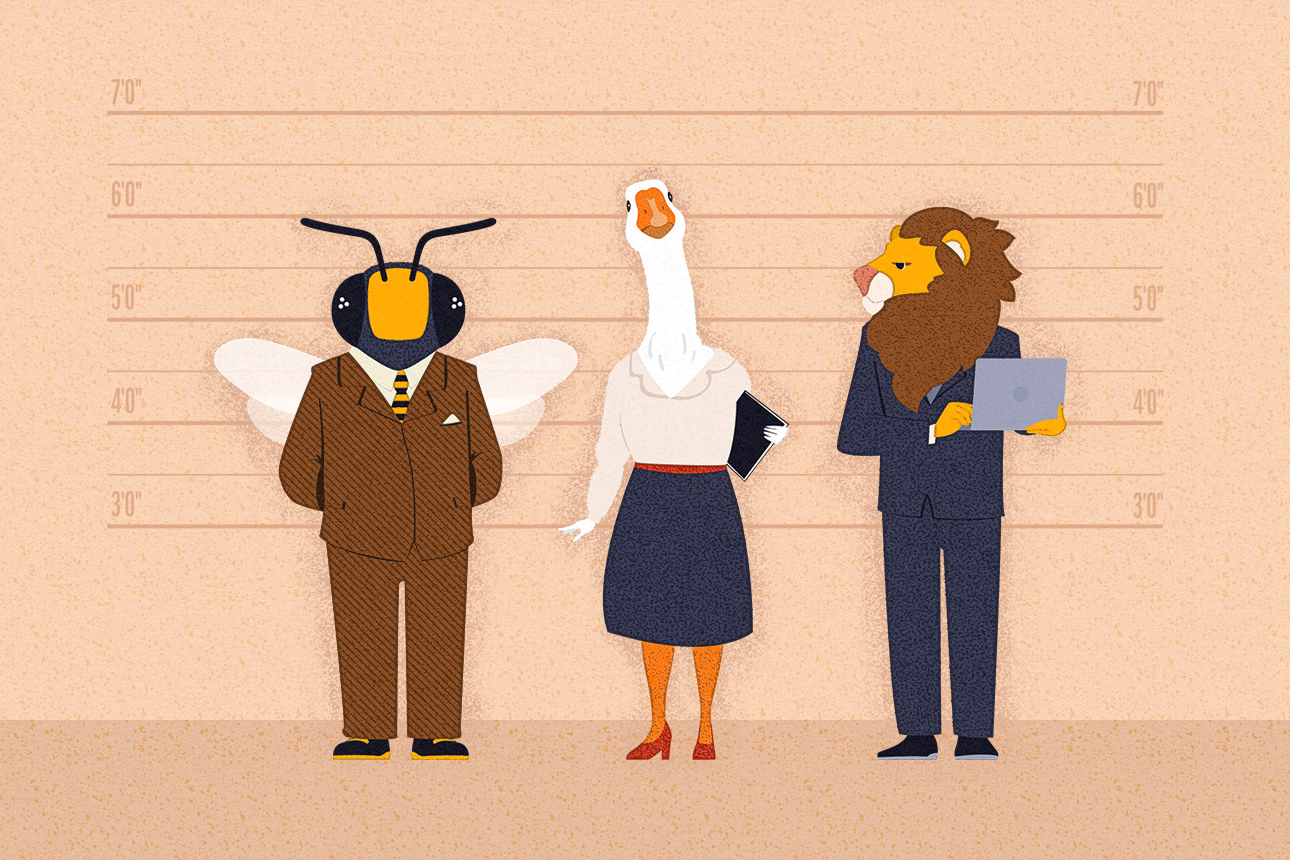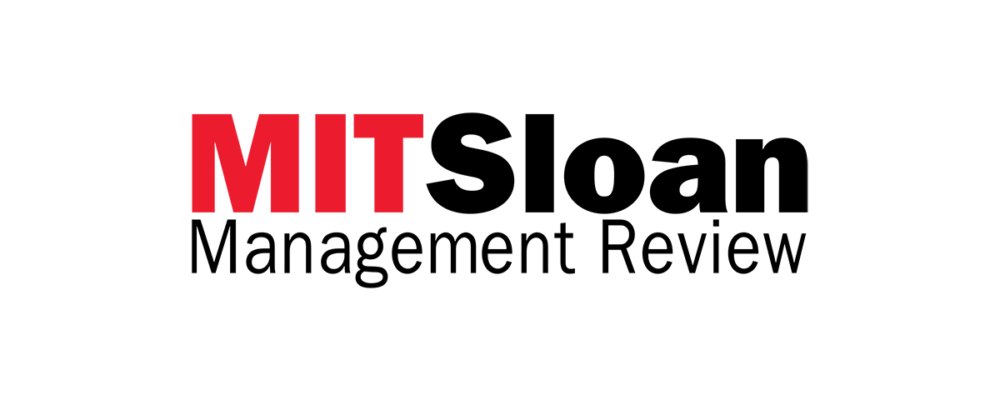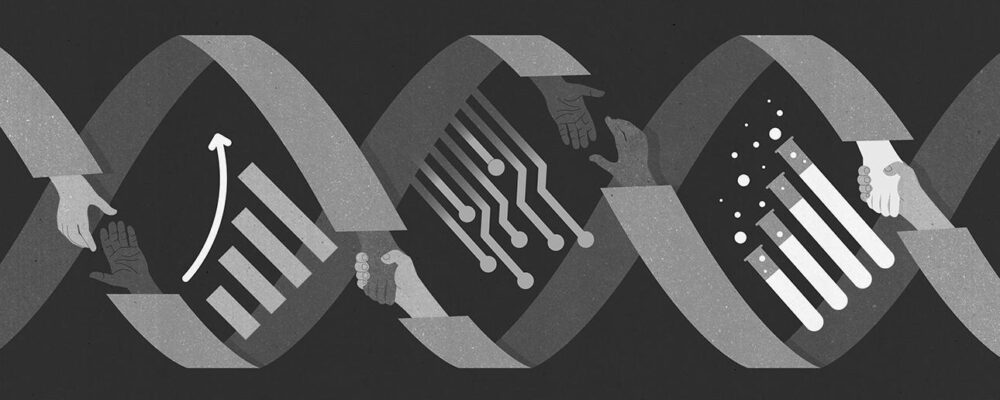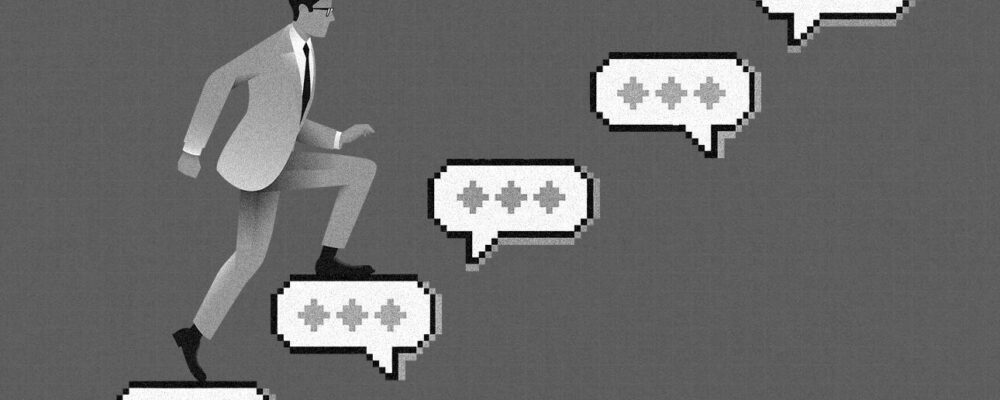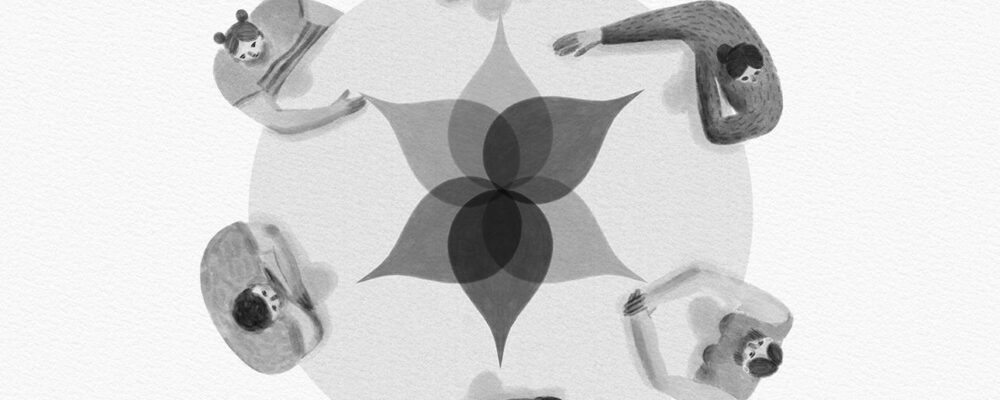Topics
Column
Our expert columnists offer opinion and analysis on important issues facing modern businesses and managers.
More in this series
Carolyn Geason-Beissel/MIT SMR | Getty Images
Ever get an animal in your house? Not a dog, a cat, or a hamster, but a wild animal: a bird that flew in and started frantically flapping around; a squirrel that invaded the fireplace. Growing up in North Carolina, we’d occasionally even find a snake in the living room, and a neighbor would come remove it with a rake and a bucket. Whatever the animal is, the experience is chaotic and fairly alarming.
During the intense days of the pandemic, leaders let some animals into the house. While we innovated in real time and found new ways to connect and be productive under unimaginable constraints, we also made space for some pretty feral ways of working. We tolerated and encouraged working practices that, in the morning light of the post-COVID era, don’t look terribly effective, civil, or logical … or all the above.
Let’s look at these animals and explore how to get them out of your (working) house.
Get Updates on Transformative Leadership
Evidence-based resources that can help you lead your team more effectively, delivered to your inbox monthly.
Please enter a valid email address
Thank you for signing up
The Busy Bee
Whenever someone at work tells me they’re busy, I have a reflexive response: “Busy is good!” To a certain extent, it’s true. A healthy business of any kind generates a ton of activity. That said, during the COVID-19 era, we took the decades-long trend toward work intensification to the next level.
What is work intensification? It’s the most dangerous work trend you’ve never heard of. When I was conducting research for my book, Work Here Now, I was fascinated to learn that academics had been studying and quantifying the creeping feeling that work has become more extreme in nature during our lifetimes. That feeling reflects the quantified reality of work intensification: We are, today, asked to do more units of work per unit of time than we were previously. Agricultural workers are asked to pick more fruit in an hour; knowledge workers are asked to be in more meetings per day.
During the COVID-19 era, we took the decades-long trend toward work intensification to the next level.
Work intensification got worse during the COVID-19 era because we were all keen to look busy: “I’m not sitting at home messing around with sourdough starter and macrame projects! I’m working constantly!” We scheduled more catch-ups, sent more emails, started more chats … all to keep that little light on our computers red (I’m working) and not green (I’m free) or, even worse, yellow (I’ve — heavens to Betsy — stepped away from the keyboard).
As our lives have shifted again in recent years, all that busyness has become genuinely unsustainable. Add back in an array of real-world activities — everything from coming into the office to attending kids’ soccer games — and we’re running out of hours to do all the things. Critical work priorities are lost in a soup of “too much.” You may feel as overwhelmed today at work as you did in 2020 — and research suggests that we are even more burned out than we were during the pandemic.
So how do we get the busy bee out of our working house? Here are a couple of strategies:
Swat your inner busy bee: Apply ruthless, constant prioritization. My apartment door has a legally mandated fire safety guide on it with two scenarios: “The fire is in your apartment” and “The fire is not in your apartment.” One way to fight oppressive busyness is to understand when the fire is in your apartment and when it is not. All tasks and initiatives are not equally important, despite an electronic environment (the email inbox or chat window) that can make them look similar. Setting crisp priorities helps you be less busy and more frequently enter a beneficial flow state (as noted by the research of Cal Newport and others).
Protect your team from stingers: Change the conversation. Your company may have challenging cultural elements around needing to appear busy, and that’s hard to unilaterally shift. But — whether you’re a manager or not — you can influence how your own team talks about, experiences, and handles work intensity. Simply put: Stop talking about how busy you are. Start talking about what you’re achieving. Conversations about results have a nice way of going viral, and you create space for others to focus on impact, not activity.
The Keyboard Lion
I’m not going to shock you with this statement: It’s possible to be very mean online, and people do it a lot.
The technical term for online nastiness is “cyber incivility,” and thankfully, researchers are starting to study it. As a University of San Diego researcher noted, it’s particularly challenging to deal with virtual unpleasantness in the workplace, where you can’t exactly “block” the perpetrator and never speak to them again.
With a greater proportion of remote work during the COVID-19 era, more folks felt free to act cranky in virtual environments. Some sent cutting emails or went on the attack on group calls, all the while feeling confident that they weren’t going to have to face their targets in the flesh anytime soon. Uncivil virtual behavior isn’t a remote-work story, though; organizations like GitHub have a decades-long tradition of perfectly lovely remote working behaviors. Rather, the seeming protection of virtual environments during the pandemic allowed people to exploit a classic human behavioral glitch: Negative information stands out to us more than positive information does. By accentuating the not-so-positive, “keyboard lions” stand out in coworkers’ minds, making them more distinct and thus powerful in the workplace.
Two categories of strategies help here. First, what’s the best way to deal with an aggressive keyboard lion who’s making your work life miserable? And second, what’s the best way to shut down your own, internal keyboard lion and be the change you want to see?
Shutting down a keyboard lion: Mute the roar. As I once learned at the zoo, the scientific difference between a big cat (the lion you don’t want in your house) and a small cat (Mr. Wiggles, whom you feed high-grade tuna and dress in bow ties) is the loudness of their roar. So to shut down a keyboard lion, turn their roar into a meow. Stop the chain of email replies; cease the chat; tell a virtual assailant to take a topic offline in a group meeting. Silence, in this context, is powerful.
Shutting down your internal keyboard lion: Go to a different environment. When you have the urge to roar yourself, change your venue. The traditional advice is to write the email and not send it, or to get up and go for a walk before you speak — and this is still wise counsel. You can expand this thinking, though: If you’re emailing, switch to chat or, ideally, switch any written mode to a phone call or in-person conversation. Step out of the cold of virtual sniping and into a warm living room, and you may find yourself behaving more like a house cat than a lion.
The Groupthink Goose
The disruption of the COVID-19 era at work didn’t turn everyone into charging lions — it also transformed some people into, well, silly geese. Specifically, compulsively yessing, groupthink geese.
The groupthink goose is a fascinating example of a set of crummy behaviors that come from a well-intentioned place. During the pandemic, we craved community and connection. Many of us wanted the warmth that comes from pleasant relationships at work, and so we toned down any natural tendency to disagree. You start out a friendly, prosocial coworker … and end up a groupthink goose, blindly following the flock, nodding compulsively, and suppressing any possible challenges to anyone’s ideas.
You start out a friendly, prosocial coworker … and end up a groupthink goose, blindly following the flock.
Unlike the loud buzzing of the busy bee or the angry roaring of the keyboard lion, the pack behavior of the groupthink goose doesn’t immediately present itself as a problem. You don’t get immediately alarmed at a flock of geese, until they start soiling your porch or pecking at small children en masse. In the working world, the flock of groupthink geese operates fine until its members all start doing the same wrong thing. And then it’s a catastrophe: Most corporate meltdowns involve an aspect of groupthink.
You need two different strategies here: a way to deal with a flock of groupthink geese, and a way to avoid being one yourself.
Dealing with groupthink geese: Lead with your eyes. Border collies are famous for herding sheep, but they also chase geese away, using an intense stare. Defeating groupthink also requires leading with your eyes, by relentlessly focusing on data and evidence that you and others can see. You won’t win a war of opinions with a bunch of folks in serious groupthink mode, and even with data in hand, it takes a while to be heard. But focusing relentlessly on visibly evident facts gives you the best shot to route the flock away from your porch or your toddler, so to speak.
Quieting your internal groupthink goose: Embrace your unique value. It can be highly tempting to just waddle off with a flock of groupthink geese yourself. It’s a seemingly safe, comfortable move that doesn’t leave you feeling politically exposed. To pull yourself out of the flock, call on your inner swan. Understand exactly what makes your point of view unique — where your true insight lies. This lets you speak up with confidence, even if your view is a bit controversial. Importantly, this strategy is about embracing your insight, not your expertise; if you feel like you must be an expert to speak up, you might wait until it’s too late to say (and do) the right thing.
Wild animals in the house are no fun. The good news is, we can banish busy bees, keyboard lions, and groupthink geese by being mindful about what work should look like now, as opposed to during the worst days of the COVID-19 crisis. Just like we adapted during that difficult time, we can adapt again to a new era that carries all its own challenges.
Work shouldn’t be where the wild things are.
“The MIT Sloan Management Review is a research-based magazine and digital platform for business executives published at the MIT Sloan School of Management.”
Please visit the firm link to site


